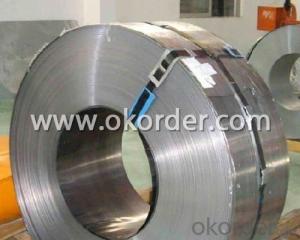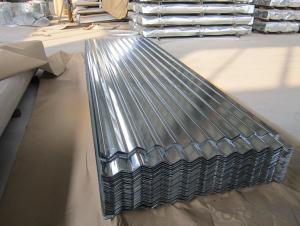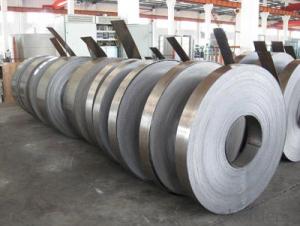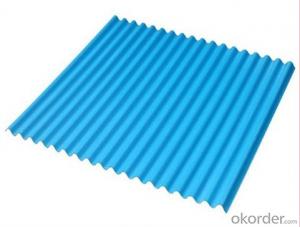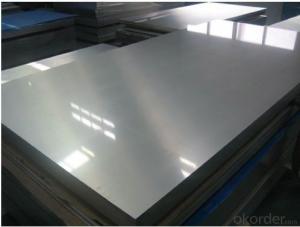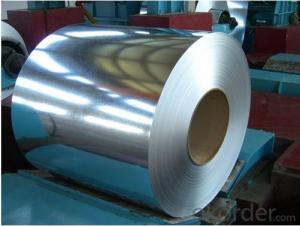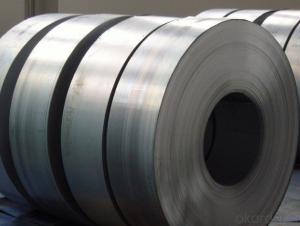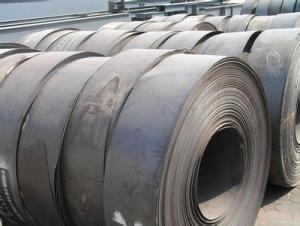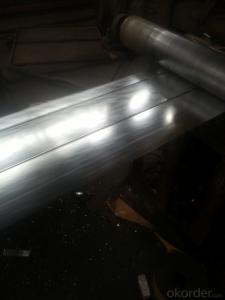Hot Rolled/Cold Rolled Steel Strip Band Steel Made In China
- Loading Port:
- Tianjin
- Payment Terms:
- TT OR LC
- Min Order Qty:
- 100 m.t.
- Supply Capability:
- 30000 m.t./month
OKorder Service Pledge
OKorder Financial Service
You Might Also Like
Item specifice
Product Description:
OKorder is offering Hot Rolled/Cold Rolled Steel Strip Band Steel Made In China at great prices with worldwide shipping. Our supplier is a world-class manufacturer of steel, with our products utilized the world over. OKorder annually supplies products to European, North American and Asian markets. We provide quotations within 24 hours of receiving an inquiry and guarantee competitive prices.
Product Applications:
Hot Rolled/Cold Rolled Steel Strip Band Steel Made In China are ideal for structural applications and are widely used in the construction of buildings and bridges, and the manufacturing, petrochemical, and transportation industries.
Product Advantages:
OKorder's Hot Rolled/Cold Rolled Steel Strip Band Steel Made In China are durable, strong, and resist corrosion.
Main Product Features:
· Premium quality
· Prompt delivery & seaworthy packing (30 days after receiving deposit)
· Corrosion resistance
· Can be recycled and reused
· Mill test certification
· Professional Service
· Competitive pricing
Product Specifications:
Spring steel is divided into two types, one is alloy spring steel, and other one is carbon spring steel.
Alloy spring steel is a type that is used for manufacturing springs and other elastic parts. Spring steel should have high elastic limit and ratio of yield strength and tensile strength to make sure that the springs obtain enough power of elastic deformation and can bear much load.
Types of alloy spring steel: Si-Mn spring steel, Si-Cr spring steel, Cr-Mn Spring steel, Cr-V spring steel and so on.
Specification of Spring Steel Strip
-Material: 50CrVA
-Standard: GB/T 1222-2007
-Type: Spring Steel
Chemical Composition:
C | Si | Mn | S |
0.26~0.34 | 0.17~0.37 | ≤0.40 | ≤0.030 |
P | Cr | Ni | Cu |
≤0.030 | 2.00~2.50 | ≤0.35 | ≤0.25 |
V | W | ||
0.50~0.80 | 4.00~4.50 |
Mechanical Properties:
-Yield Strength σs (MPa): ≥1470 (150)
-Elongation δ10(%):≥7
-Hardness:
1, Hot rolled + Heat treatment, ≤321HB
2, Cold drawn + Heat treatment: ≤321HB
-Impact Power: ≥40
Norm of heat treatment:
1, Quenching: 1050℃~1100℃.
2, Cooled by oil.
3, Tempering: 600℃±50℃.
Usage/Applications of Spring Strip Steel:
-Due to the elements W, Cr and V, this type of spring steel obtain pretty high hardenability and nice mechanical properties under room temperature and high temperature. The tempering stability and hot workability are good.
-Being used under the state of quenching and high temperature tempering. It’s usually used as heat-resisting springs with working temperature below 500℃, like main secure valve spring of furnace and turbine steam seal leaf springs.
FAQ:
Q1: Why buy Materials & Equipment from OKorder.com?
A1: All products offered byOKorder.com are carefully selected from China's most reliable manufacturing enterprises. Through its ISO certifications, OKorder.com adheres to the highest standards and a commitment to supply chain safety and customer satisfaction.
Q2: How do we guarantee the quality of our products?
A2: We have established an advanced quality management system which conducts strict quality tests at every step, from raw materials to the final product. At the same time, we provide extensive follow-up service assurances as required.
Q3: How soon can we receive the product after purchase?
A3: Within three days of placing an order, we will begin production. The specific shipping date is dependent upon international and government factors, but is typically 7 to 10 workdays.
Q4: What makes stainless steel stainless?
A4: Stainless steel must contain at least 10.5 % chromium. It is this element that reacts with the oxygen in the air to form a complex chrome-oxide surface layer that is invisible but strong enough to prevent further oxygen from "staining" (rusting) the surface. Higher levels of chromium and the addition of other alloying elements such as nickel and molybdenum enhance this surface layer and improve the corrosion resistance of the stainless material.
Q5: Can stainless steel rust?
A5: Stainless does not "rust" as you think of regular steel rusting with a red oxide on the surface that flakes off. If you see red rust it is probably due to some iron particles that have contaminated the surface of the stainless steel and it is these iron particles that are rusting. Look at the source of the rusting and see if you can remove it from the surface.
Images:
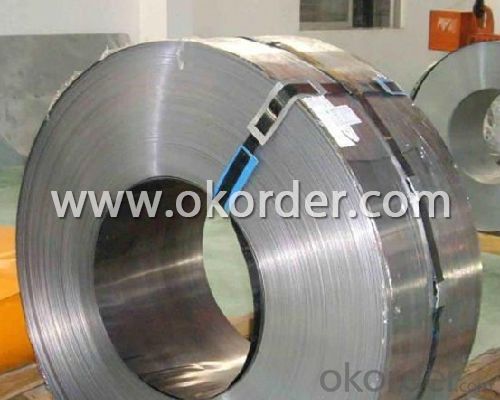

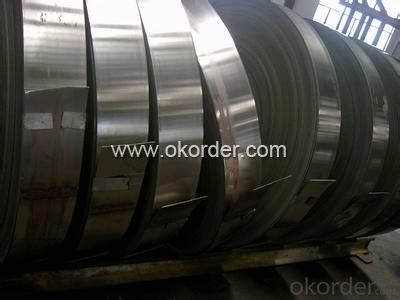
- Q:Are steel strips suitable for making utensils?
- Yes, steel strips are suitable for making utensils. Steel is a durable and strong material that can withstand high temperatures and resist corrosion. It is commonly used in the production of kitchen utensils due to its versatility and ability to be easily shaped and molded into various forms.
- Q:How are steel strips used in the production of appliances?
- Steel strips are used in the production of appliances to provide structural support, enhance durability, and ensure the overall strength and stability of the appliance. These strips are often used to reinforce the internal components and to create the framework or housing of the appliance, ensuring it can withstand the rigors of everyday use. Additionally, steel strips can be shaped and molded to form specific parts or components of appliances, such as brackets, handles, or hinges, further contributing to their functionality and longevity.
- Q:How are steel strips used in the fabrication of furniture?
- Steel strips are commonly used in the fabrication of furniture for various purposes. They are typically used as structural components to provide strength, stability, and support to the furniture pieces. Steel strips can be shaped and welded into frames, legs, or brackets, which serve as the skeleton of the furniture. These frames are often hidden or covered by other materials such as wood or upholstery, but they are crucial in ensuring the durability and longevity of the furniture. Moreover, steel strips can also be used for decorative purposes in furniture fabrication. They can be bent, twisted, or etched to create intricate designs or patterns, adding aesthetic appeal to the furniture. For instance, steel strips can be used to create decorative accents on the arms or backrests of chairs, or as a decorative trim on the edges of tables or cabinets. In addition, steel strips are commonly used in furniture with adjustable features. They can be utilized as mechanisms for reclining chairs, extendable dining tables, or adjustable shelves. By incorporating steel strips in these mechanisms, furniture designers can ensure smooth and reliable operation, as well as enhance the overall functionality of the furniture. Overall, steel strips play a vital role in the fabrication of furniture by providing structural support, decorative elements, and adjustable features. They contribute to the strength, durability, and aesthetic appeal of the furniture, making them an essential component in the manufacturing process.
- Q:How are steel strips coated to prevent corrosion?
- Steel strips are typically coated with a protective layer to prevent corrosion. This is commonly done through a process called galvanization, where the steel is dipped into a bath of molten zinc. The zinc forms a coating on the steel surface, creating a barrier that shields it from exposure to moisture and corrosive elements. This coating helps to extend the lifespan of the steel strips and maintain their structural integrity.
- Q:Can steel strips be used in the production of electronic components?
- Yes, steel strips can be used in the production of electronic components. Steel strips are commonly used as a base material for various electronic components due to their strength, durability, and conductivity properties. They are often utilized in the manufacturing of printed circuit boards (PCBs), connectors, and other electronic parts. Steel strips can provide a stable foundation for mounting electronic components, ensuring proper alignment and secure attachment. Additionally, steel strips can be coated or treated to prevent corrosion and enhance electrical conductivity, making them suitable for use in electronic applications. Overall, steel strips offer a reliable and cost-effective solution for the production of electronic components.
- Q:How are steel strips cut to the desired length?
- Various methods can be utilized to cut steel strips to the desired length, depending on specific requirements and available equipment. One commonly employed technique involves using a shearing process, where a shearing machine is utilized to cut the steel strip into the desired length. This machine comprises of two blades, one stationary and the other movable, which are utilized to apply a shearing force to the strip, resulting in a precise and clean cut. Another method involves employing a slitting process, whereby the steel strip is passed through a set of circular blades. These blades are positioned at a specific distance from each other, which determines the width of the strips being produced. As the strip passes through the blades, it is divided into multiple narrower strips, which can then be further processed or used in their current form. In certain cases, laser cutting technology can be employed to cut steel strips to the desired length. This method utilizes a high-powered laser beam to heat and melt the steel, enabling accurate and precise cuts. Laser cutting offers the advantage of being capable of cutting intricate shapes and patterns, making it suitable for intricate cutting requirements. Regardless of the chosen method, it is essential to securely hold the steel strip during the cutting process to maintain accuracy and prevent any undesired movement. Furthermore, proper safety precautions should be followed to protect workers and equipment during the cutting operation.
- Q:What are the different methods for painting steel strips?
- There are several different methods that can be used for painting steel strips, depending on the desired outcome and the specific requirements of the project. Some of the most common methods include: 1. Spray painting: This is one of the most popular and efficient methods for painting steel strips. It involves using a paint spray gun to evenly coat the surface of the steel with paint. This method allows for precise control over the application, resulting in a smooth and even finish. 2. Brush painting: Another commonly used method is brush painting, which involves using a paintbrush to apply the paint onto the steel strips. This method can be more time-consuming and may require multiple coats to achieve the desired level of coverage and finish. 3. Dip coating: Dip coating is a method in which the steel strips are immersed into a tank of paint or coating material. The strips are then removed and excess paint is allowed to drip off. This method is often used for coating large volumes of steel strips quickly and efficiently. 4. Electrostatic painting: Electrostatic painting involves applying an electric charge to the paint particles as they are sprayed onto the steel strips. The steel strips are grounded, which attracts the charged particles to the surface, resulting in a more even and controlled application. 5. Powder coating: Powder coating is a dry finishing process that involves applying a powdered paint to the steel strips. The strips are then heated, causing the powder to melt and form a durable and protective coating. This method is known for its durability and resistance to chipping and fading. 6. Roll coating: Roll coating is a method in which the steel strips are passed through a set of rollers that are coated with paint or coating material. The rollers evenly distribute the paint onto the surface of the strips, resulting in a consistent and uniform coating. It is important to consider factors such as the desired finish, durability, and efficiency when choosing the method for painting steel strips. The specific application and requirements of the project will ultimately determine which method is most suitable.
- Q:How are steel strips used in the production of hand tools?
- Due to their durability and versatility, steel strips find wide application in the manufacturing of hand tools. These strips are typically made from high-quality steel alloys, which offer exceptional strength and wear resistance. In the production process, steel strips are initially cut into desired dimensions and then undergo various forming operations such as bending, stamping, or rolling. This allows the strips to take on the specific shapes required for hand tool components, including blades, handles, or shafts. The flexibility of steel strips enables the production of a diverse range of tool designs to meet varied application needs. Once the components are shaped, they undergo further processing through heat treatment, which enhances their hardness and toughness. This treatment ensures that the hand tools can endure significant force, impact, and wear during use, making them highly durable and long-lasting. Steel strips are also utilized in the production of hand tool accessories, such as springs, clips, or fasteners. These components play crucial roles in enhancing the functionality and usability of the tools. For example, springs made from steel strips provide the necessary tension or pressure required for certain hand tools, like pliers or clamps. Furthermore, steel strips can be coated or plated with protective finishes, such as chrome or nickel, to enhance their corrosion resistance and improve the overall aesthetics of the hand tools. This added layer of protection ensures that the tools remain in good condition even in challenging working environments. In summary, steel strips are indispensable in the production of hand tools as they provide the necessary strength, durability, and versatility for various applications. From blades to handles, these strips enable the creation of high-quality tools that can withstand rigorous use and deliver exceptional performance.
- Q:How are steel strips processed for surface coating?
- Steel strips are processed for surface coating through a series of steps that ensure proper adhesion and durability of the coating. The process typically involves cleaning, pre-treatment, and application of the coating. Firstly, the steel strips are thoroughly cleaned to remove any dirt, grease, or other contaminants that may hinder adhesion. This is usually done through a combination of mechanical cleaning, such as brushing or blasting, and chemical cleaning using solvents or alkaline cleaners. After cleaning, the steel strips undergo pre-treatment to improve the bonding between the surface and the coating. This can involve various methods such as phosphating, chromating, or zirconium-based treatments. These treatments create a thin layer on the surface that enhances adhesion and corrosion resistance. Once the pre-treatment is complete, the steel strips are ready for the application of the coating. The coating can be applied through different techniques such as hot-dip galvanizing, electroplating, or powder coating. Each technique has its advantages and is chosen based on the specific requirements of the steel strips. In hot-dip galvanizing, the steel strips are immersed in a bath of molten zinc, which forms a protective layer on the surface. Electroplating involves passing an electric current through the steel strip while it is submerged in a plating solution. This causes a metal coating, such as chrome or nickel, to be deposited on the surface. Powder coating involves electrostatically spraying a dry powder onto the steel strip and then curing it through heat, which results in a durable and attractive finish. After the coating is applied, the steel strips are usually inspected for quality control purposes. This can involve visual inspection, thickness measurement, adhesion testing, and other checks to ensure that the coating meets the required specifications. In summary, steel strips are processed for surface coating through cleaning, pre-treatment, and application of the coating. This ensures that the surface is properly prepared for adhesion and that the coating is applied in a manner that meets the desired requirements for protection and appearance.
- Q:What is the thermal conductivity of a steel strip?
- The thermal conductivity of a steel strip can vary depending on the specific type and composition of the steel, but generally, it is around 15-50 W/mK (watts per meter-kelvin).
1. Manufacturer Overview |
|
|---|---|
| Location | |
| Year Established | |
| Annual Output Value | |
| Main Markets | |
| Company Certifications | |
2. Manufacturer Certificates |
|
|---|---|
| a) Certification Name | |
| Range | |
| Reference | |
| Validity Period | |
3. Manufacturer Capability |
|
|---|---|
| a)Trade Capacity | |
| Nearest Port | |
| Export Percentage | |
| No.of Employees in Trade Department | |
| Language Spoken: | |
| b)Factory Information | |
| Factory Size: | |
| No. of Production Lines | |
| Contract Manufacturing | |
| Product Price Range | |
Send your message to us
Hot Rolled/Cold Rolled Steel Strip Band Steel Made In China
- Loading Port:
- Tianjin
- Payment Terms:
- TT OR LC
- Min Order Qty:
- 100 m.t.
- Supply Capability:
- 30000 m.t./month
OKorder Service Pledge
OKorder Financial Service
Similar products
New products
Hot products
Hot Searches
Related keywords
